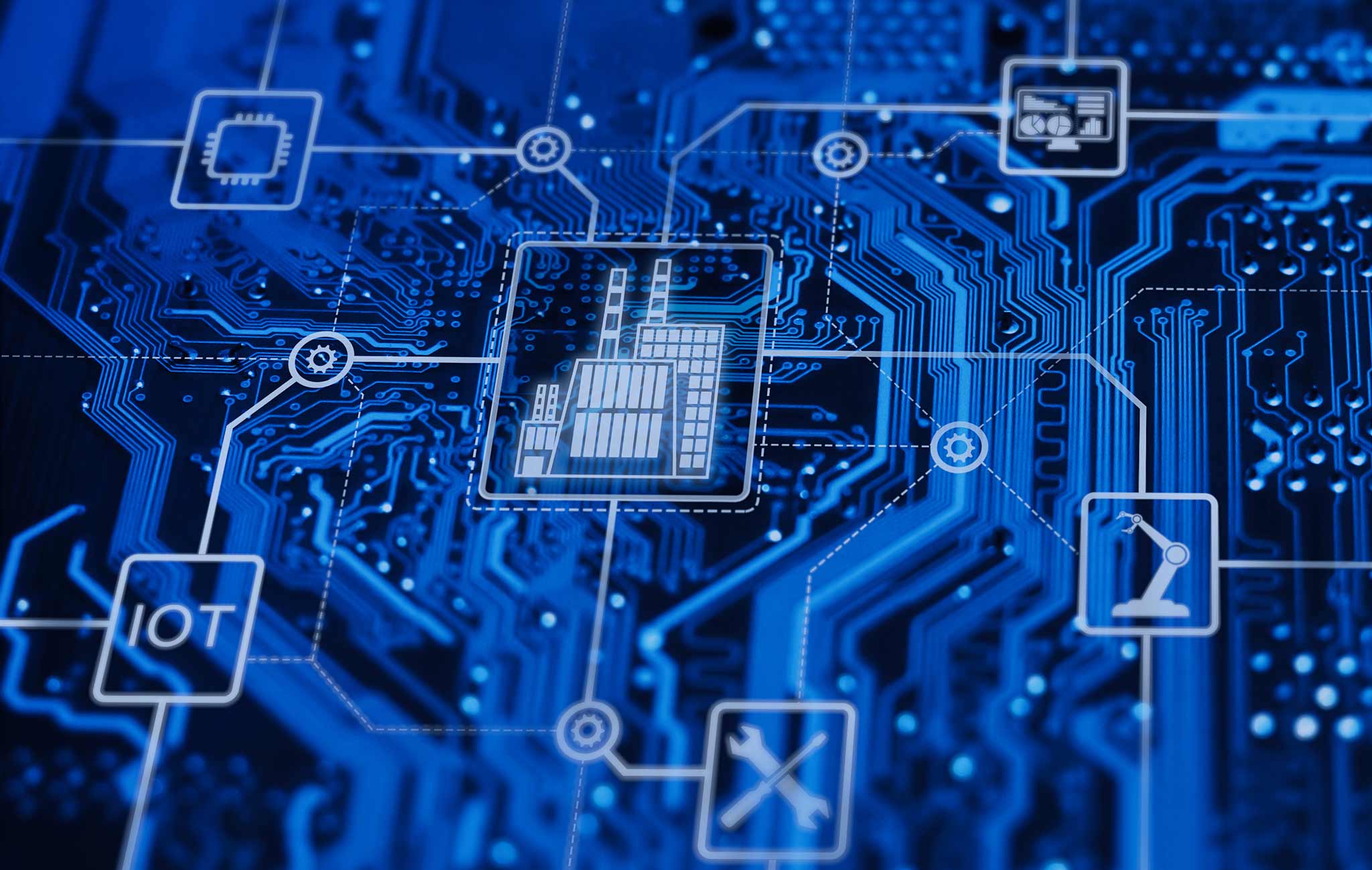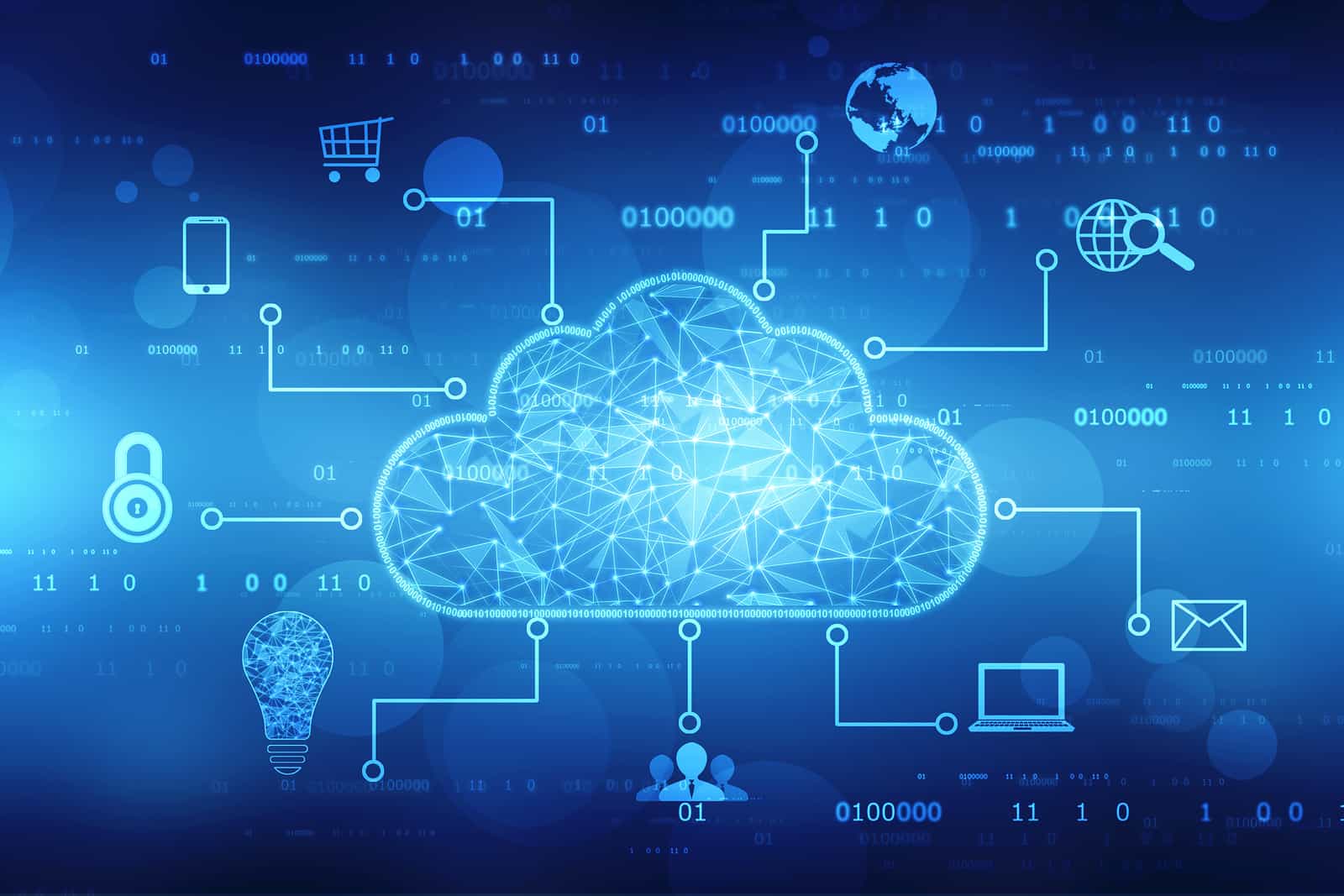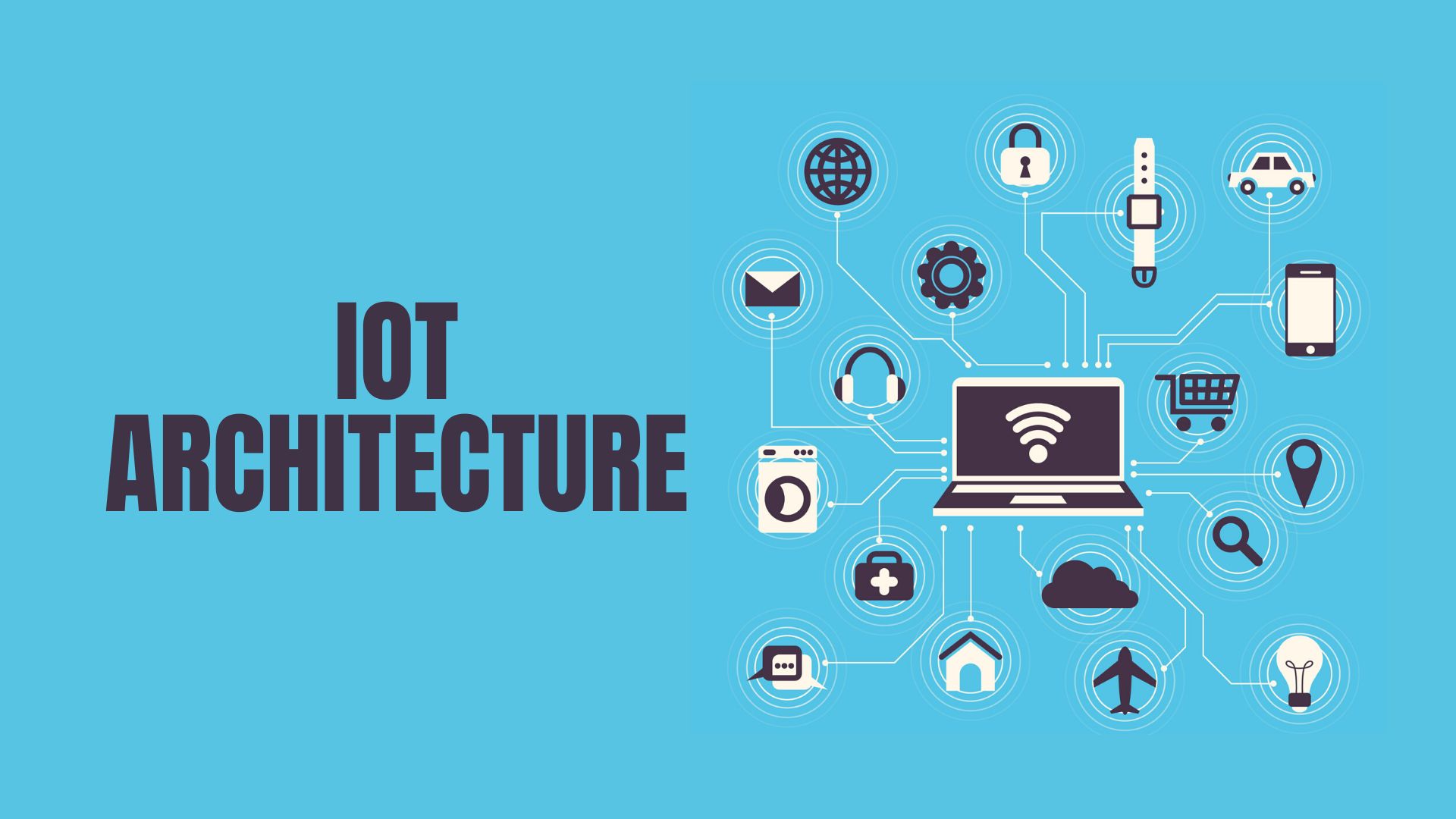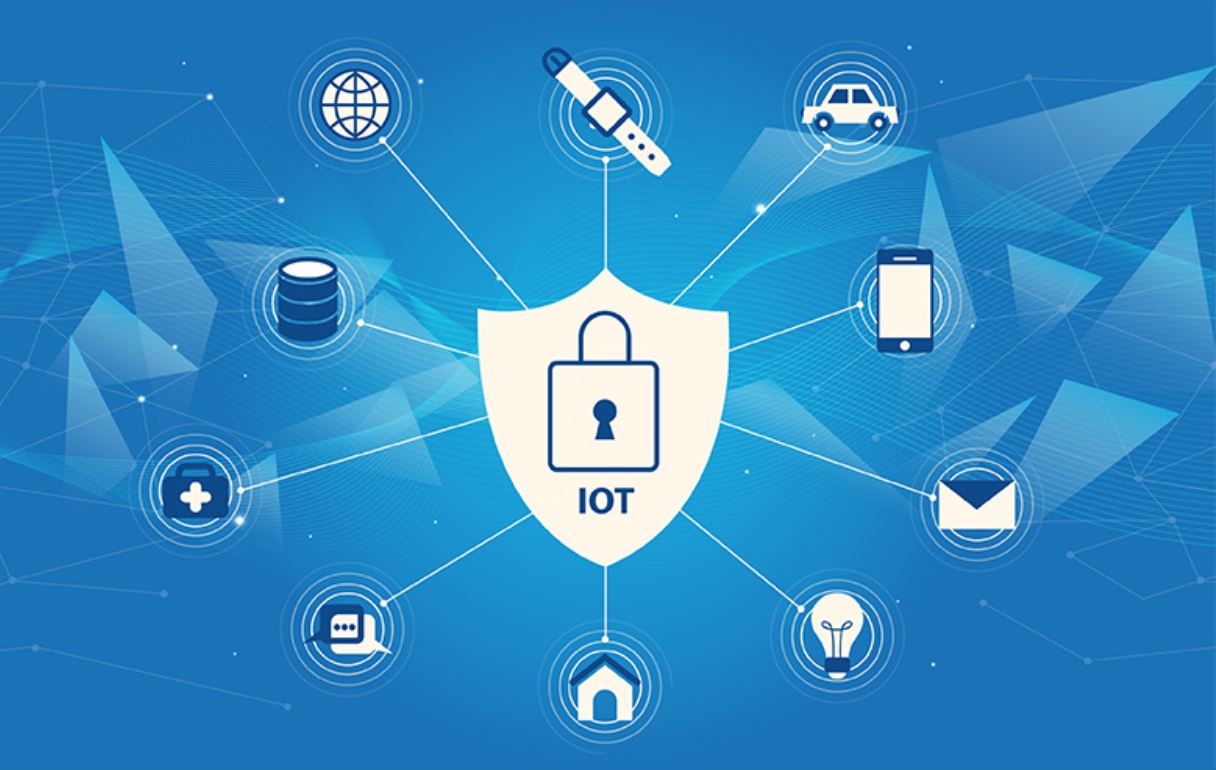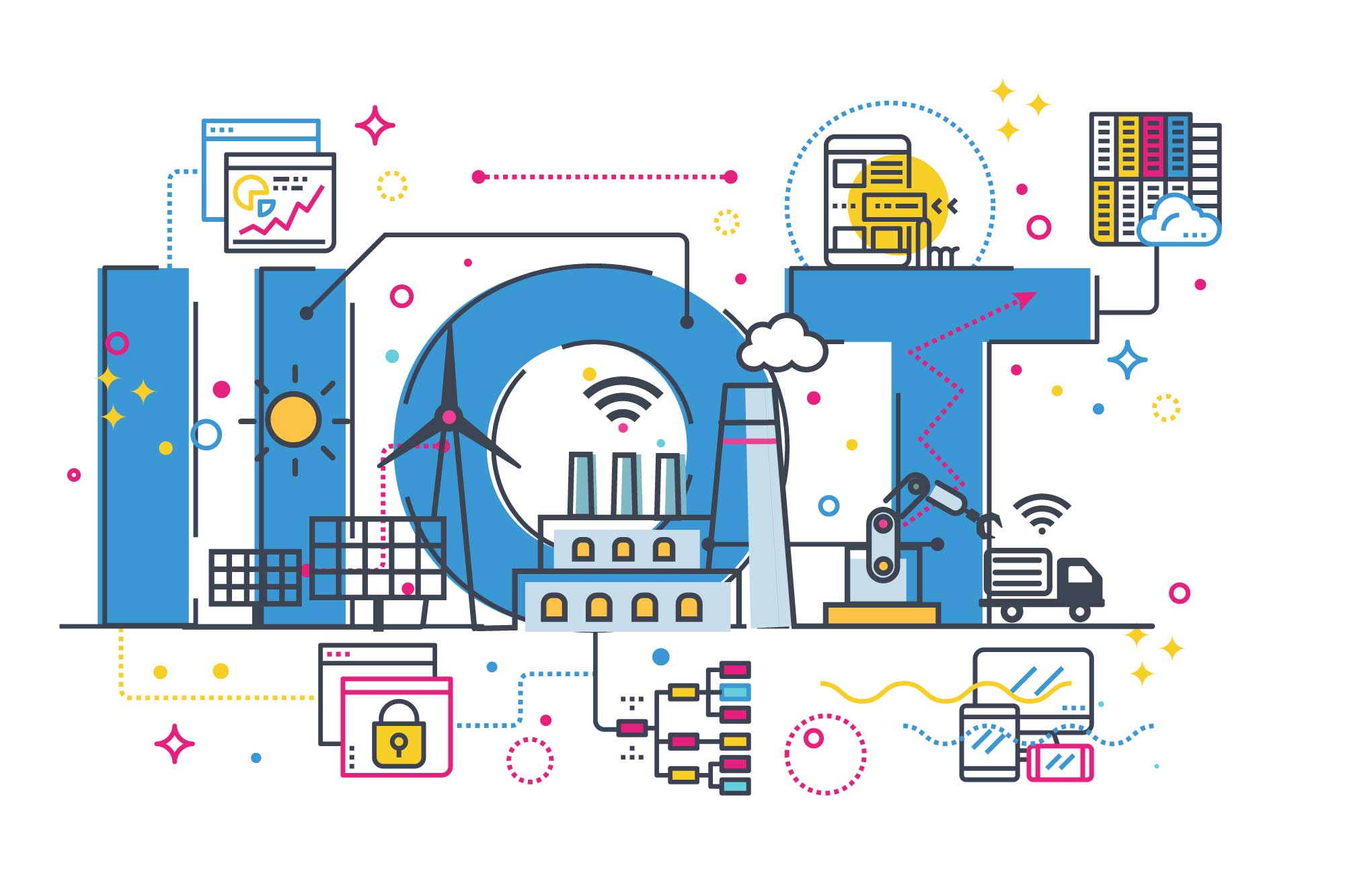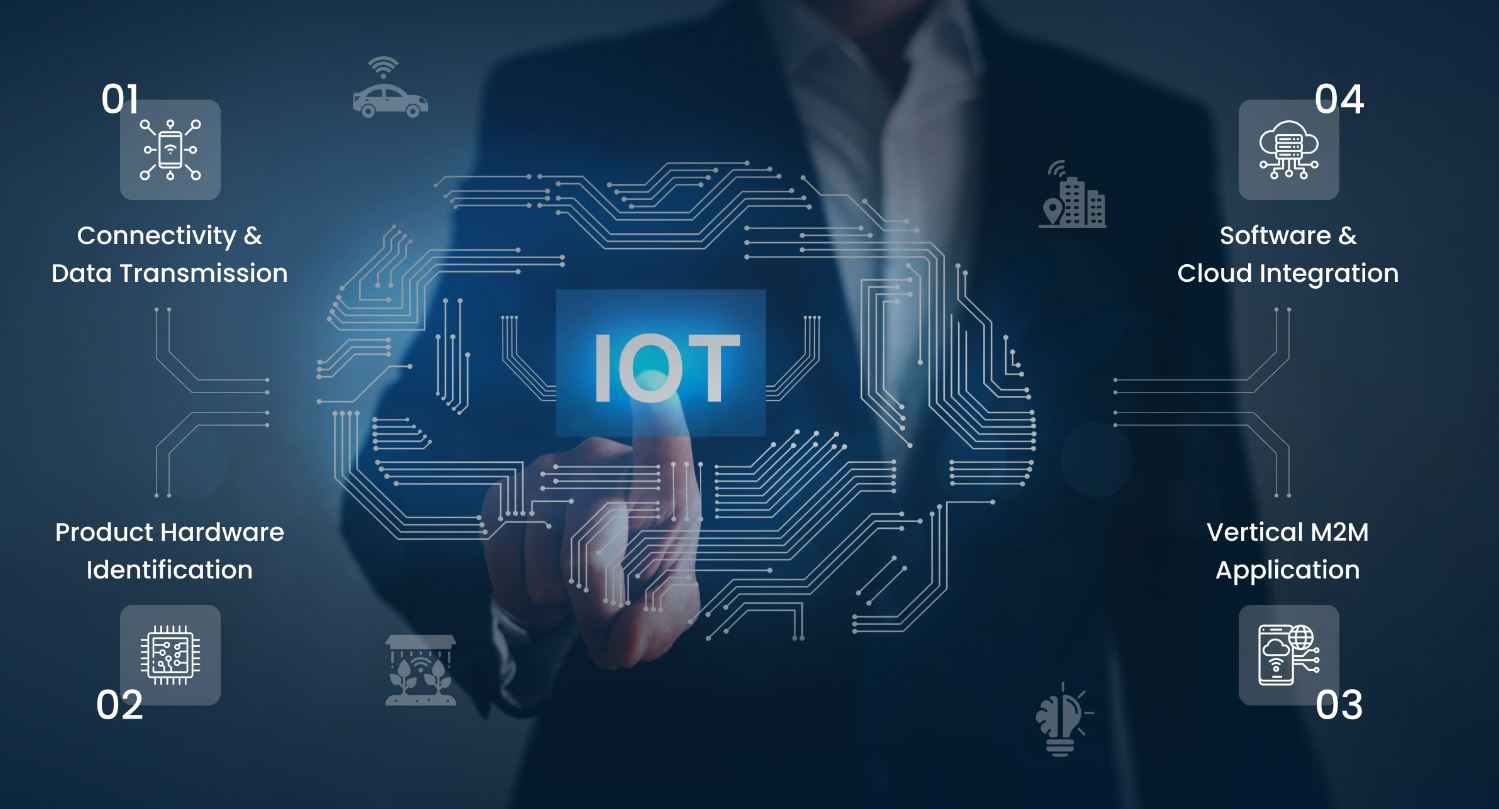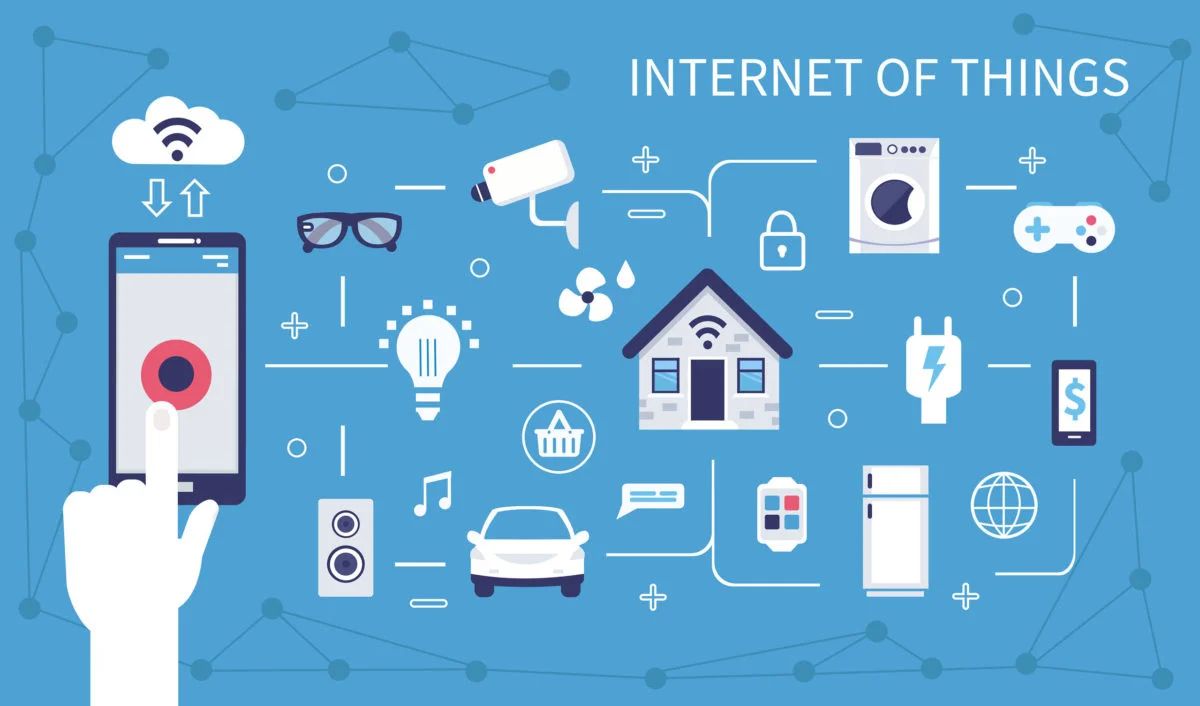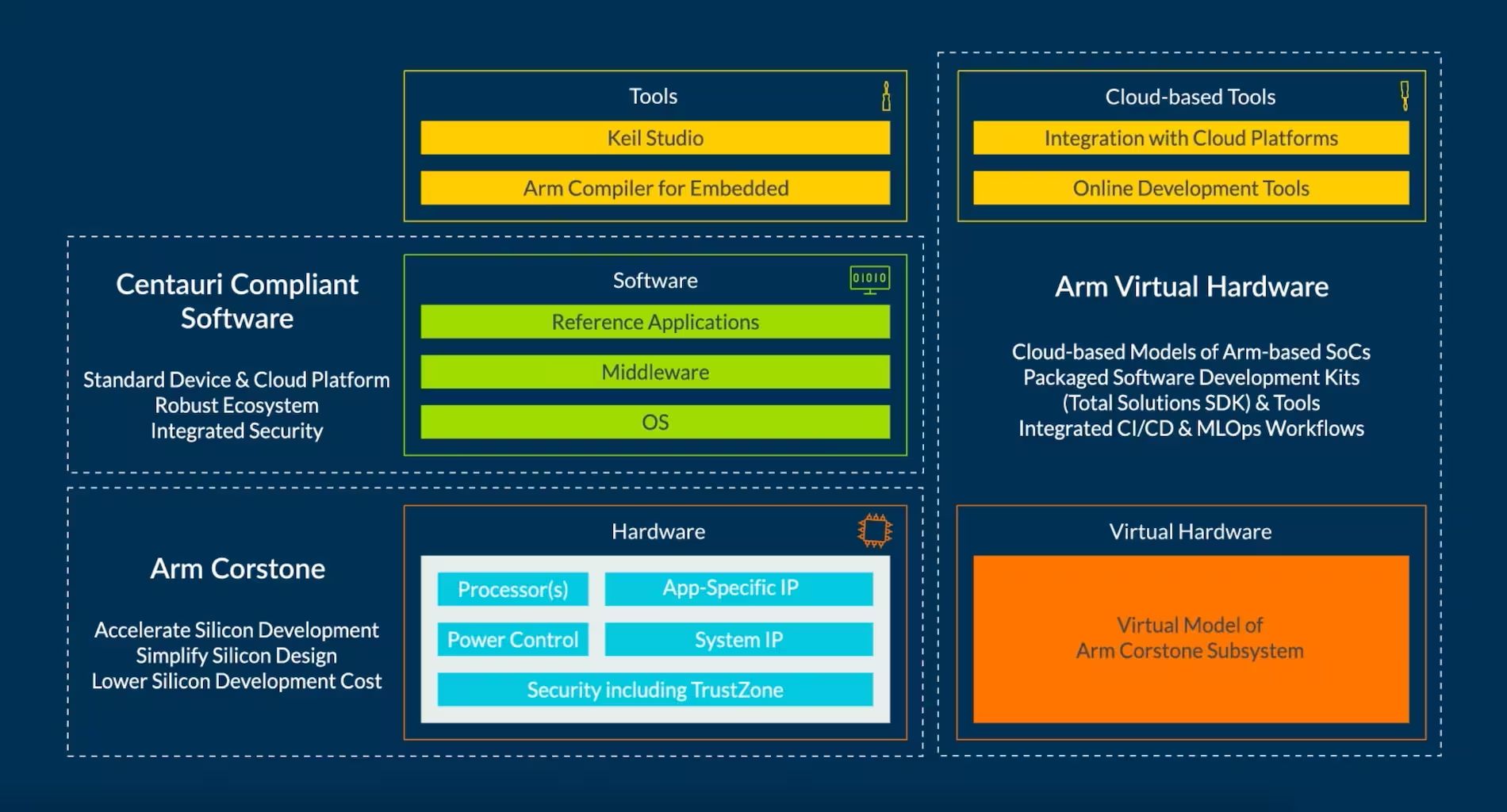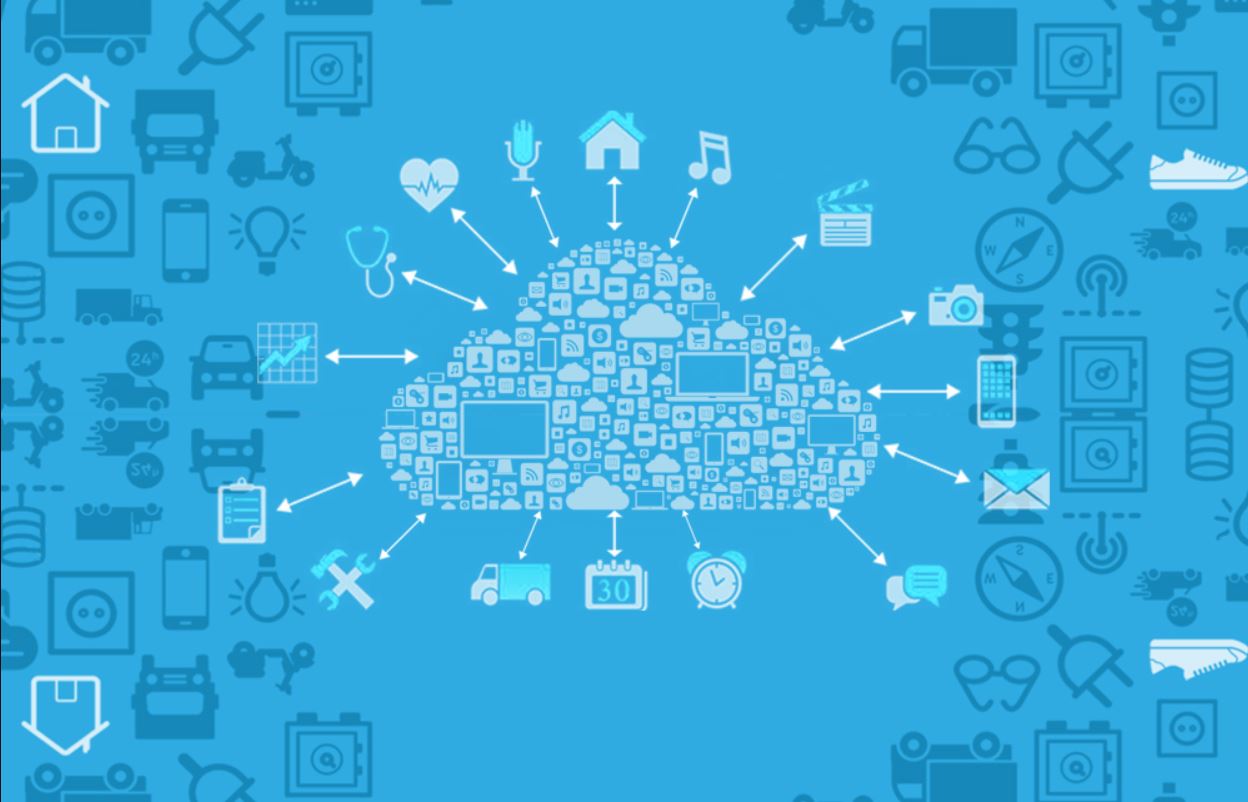Introduction
The Internet of Things (IoT) has become an integral part of our everyday lives. With the proliferation of connected devices, there is an exponential increase in the amount of data generated by these devices. This vast amount of data holds tremendous potential for businesses and organizations to gain valuable insights and improve operations. However, managing and effectively utilizing this IoT data can be a daunting task.
IoT data refers to the information collected from various sensors, devices, and systems that are connected to the internet. This data can include anything from temperature and humidity readings to location information, customer behaviors, and much more. The sheer volume, velocity, and variety of IoT data present significant challenges in terms of collection, storage, analysis, and security.
As businesses strive to make data-driven decisions, understanding how to handle IoT data becomes crucial. This article will explore the importance of IoT data, the challenges associated with managing it, and provide practical steps to effectively handle and leverage IoT data.
Importance of IoT Data
IoT data holds immense value for businesses and organizations across industries. By harnessing the power of IoT data, companies can gain valuable insights, drive innovation, improve operational efficiency, and create new business opportunities. Here are some key reasons why IoT data is important:
- Real-time insights: IoT data provides organizations with real-time insights into their operations, allowing them to make timely decisions based on accurate and up-to-date information. This enables companies to respond quickly to changing market conditions, optimize processes, and enhance customer experiences.
- Data-driven decision making: With the abundance of IoT data available, businesses can leverage advanced analytics and machine learning algorithms to make data-driven decisions. By analyzing patterns, trends, and correlations within the data, organizations can uncover valuable insights that can drive strategic decision making and better business outcomes.
- Improved operational efficiency: IoT data can help identify bottlenecks, inefficiencies, and predictive maintenance requirements within various systems and processes. By monitoring and analyzing this data, businesses can optimize operations, reduce downtime, minimize costs, and improve overall efficiency.
- Enhanced customer experiences: IoT data provides a wealth of information about customer behaviors, preferences, and usage patterns. By analyzing this data, businesses can gain a deeper understanding of their customers, personalize offerings, and deliver customized experiences that meet their needs and expectations.
- Innovation and new business opportunities: IoT data allows organizations to uncover new business opportunities and innovate in various ways. By analyzing IoT data, companies can identify gaps in the market, develop new products and services, and create unique customer experiences that set them apart from competitors.
Overall, IoT data has the potential to transform businesses and industries by enabling organizations to make data-driven decisions, enhance operational efficiency, and drive innovation. However, in order to fully realize the benefits of IoT data, businesses must overcome the challenges associated with collecting, storing, analyzing, and securing this vast amount of information.
Challenges of Handling IoT Data
While IoT data offers immense opportunities, it also presents several challenges that organizations must tackle to effectively handle and utilize the data. These challenges include:
- Volume and velocity: The sheer volume and velocity at which IoT data is generated can be overwhelming. With billions of connected devices constantly producing data, organizations must have the capacity to collect, store, and process such a massive amount of information in real-time.
- Data variety and complexity: IoT data comes in various forms, formats, and structures. It can include structured data from sensors, unstructured data from social media, or semi-structured data from customer interactions. Dealing with this data variety and complexity requires robust data integration and management processes.
- Data quality and accuracy: IoT data can be susceptible to errors, inconsistencies, and noise. Due to the large-scale collection of data from diverse sources, ensuring data quality and accuracy becomes a challenge. Inaccurate or incomplete data can lead to flawed analysis and decision making.
- Data security and privacy: IoT data often contains sensitive information about individuals, locations, and assets. Securing this data and protecting it from unauthorized access and breaches is of utmost importance. Ensuring data privacy and compliance with regulations further adds complexity to handling IoT data.
- Integration and interoperability: IoT devices and systems come from different manufacturers and operate on different protocols. Ensuring seamless integration and interoperability among these devices and systems is essential to collect and combine data effectively.
- Scalability and infrastructure: As the number of connected devices and the volume of IoT data increases, organizations need scalable infrastructure and resources to handle the growth. This includes robust storage systems, high-speed networks, and powerful computing capabilities.
Addressing these challenges requires organizations to invest in advanced technologies, implement robust data management practices, and develop data governance strategies to ensure the accuracy, security, and usefulness of IoT data. By overcoming these challenges, companies can unlock the full potential of IoT data and harness its benefits to drive business growth and innovation.
Steps to Managing IoT Data
Effectively managing and utilizing IoT data requires a systematic approach. Here are some essential steps to consider when handling IoT data:
- Identify data requirements: Define the specific goals, objectives, and use cases for collecting IoT data. Determine the types of data that are most valuable and relevant to your organization’s needs. This will help you focus on collecting and analyzing the right data.
- Implement data collection mechanisms: Set up a robust data collection infrastructure that can handle the volume, velocity, and variety of IoT data. This can involve deploying sensors, devices, and gateways that can capture and transmit data securely and efficiently.
- Establish data storage and management: Choose appropriate storage solutions that can handle the large-scale nature of IoT data. Implement data management practices to ensure data quality, accuracy, and accessibility. This includes data cleaning, integration, and transformation processes.
- Apply data analytics and insights: Utilize advanced analytics techniques such as machine learning, artificial intelligence, and predictive modeling to extract valuable insights from IoT data. Analyze the data to identify patterns, trends, and anomalies that can drive informed decision making.
- Ensure data security and privacy: Implement robust security measures to protect IoT data from unauthorized access, breaches, and cyber threats. Encrypt data during transmission and storage, and establish strict access controls. Comply with data privacy regulations to maintain the trust of customers and stakeholders.
- Integrate with existing systems: Integrate IoT data with existing systems, such as enterprise resource planning (ERP) systems, customer relationship management (CRM) systems, and data warehouses. This enables organizations to gain a holistic view of their operations and leverage IoT data in conjunction with other data sources.
- Continuously monitor and optimize: Regularly monitor the performance and accuracy of IoT data collection and analysis processes. Identify areas for improvement and optimize data management strategies. Stay updated with advancements in IoT technologies and adapt your approach to stay ahead.
By following these steps, organizations can effectively manage and leverage IoT data to gain valuable insights, optimize operations, and make data-driven decisions. Successful management of IoT data requires a combination of technological capabilities, data governance, and a clear understanding of the organization’s specific objectives and use cases.
Collecting and Storing IoT Data
Collecting and storing IoT data in a reliable and scalable manner is essential for organizations to effectively leverage its insights. Here are some key considerations for collecting and storing IoT data:
- Data collection methods: Determine the most appropriate data collection method for your specific IoT use case. This can involve using sensors, devices, or gateways to capture data in real-time. Select data collection methods that align with your organization’s goals and technical requirements.
- Data ingestion and processing: Implement a data ingestion pipeline to collect and process incoming IoT data. This involves establishing protocols for data formatting, data normalization, and data cleansing. Develop mechanisms to handle data validation and verification to ensure the accuracy and quality of the collected data.
- Scalable data storage: Choose a robust and scalable data storage solution that can handle the volume and variety of IoT data. Options include cloud-based storage solutions, on-premises data centers, or a hybrid approach. Consider factors such as data durability, data accessibility, and scalability when selecting a storage solution.
- Data archival and retention: Define data retention policies based on legal, regulatory, and business requirements. Determine the duration for which data needs to be stored and establish mechanisms for data archival and retrieval. This ensures compliance while minimizing storage costs.
- Data encryption and security: Implement encryption mechanisms to secure both data in transit and data at rest. Use secure protocols for data transmission and employ encryption algorithms to protect stored data. Implement access controls to ensure that only authorized individuals can access and manipulate the IoT data.
- Data backup and disaster recovery: Establish regular backup routines to safeguard IoT data in the event of system failures or disasters. Implement disaster recovery plans to ensure minimal data loss and enable prompt data restoration. Regularly test and verify the effectiveness of backup and recovery processes to maintain data integrity.
- Data governance and compliance: Develop a data governance framework to manage the entire lifecycle of IoT data. Define roles and responsibilities, establish data governance policies, and ensure compliance with applicable regulations. Monitor data usage, document data lineage, and enforce data governance practices to maintain data quality and integrity.
- Data integration and interoperability: Ensure that IoT data can be seamlessly integrated with other data sources within the organization. Implement data integration techniques, such as API integrations or data virtualization, to combine and analyze data from various systems. Aim for interoperability between different IoT devices and systems to enable efficient data exchange.
By following these practices for collecting and storing IoT data, organizations can ensure the reliability, accessibility, and security of their data assets. This sets the foundation for effective analysis and utilization of IoT data to drive business growth and innovation.
Analyzing and Extracting Insights from IoT Data
Analyzing and extracting insights from IoT data is a critical step in unlocking its value and leveraging it to drive informed decision making. Here are some key considerations for effectively analyzing and extracting insights from IoT data:
- Data preprocessing: Before analysis, perform data preprocessing tasks such as data cleaning, filtering, and normalization. This helps to address data quality issues, remove noise, and ensure consistency in the dataset, resulting in more accurate analysis results.
- Descriptive analytics: Use descriptive analytics techniques to understand the current state of affairs and identify patterns within the IoT data. This can involve summarizing data, visualizing trends, and generating key performance indicators (KPIs) to provide a comprehensive overview of the data.
- Diagnostic analytics: Employ diagnostic analytics techniques to investigate the reasons behind certain patterns or anomalies observed in the IoT data. This involves identifying the root causes of issues or events and understanding their impact on business operations.
- Predictive analytics: Utilize predictive analytics to forecast future trends and make proactive decisions based on IoT data. This involves applying machine learning algorithms and statistical models to identify patterns and correlations in the data that can provide insights into future outcomes.
- Prescriptive analytics: Go beyond predicting future trends by leveraging prescriptive analytics. This involves using optimization and simulation techniques to recommend the best course of action based on the insights derived from IoT data. It enables organizations to make data-driven decisions and optimize processes.
- Data visualization: Present the findings from analysis in a visual format to aid understanding and communication. Use charts, graphs, and dashboards to display trends, patterns, and anomalies. Data visualization enhances the interpretability of IoT data and facilitates decision making.
- Advanced analytics techniques: Explore advanced analytics techniques such as anomaly detection, natural language processing, and clustering to uncover hidden insights and correlations within the IoT data. These techniques can provide deeper insights and enable organizations to make more informed decisions.
- Iterative analysis: Perform iterative analysis to refine and improve the analysis results. Evaluate the effectiveness of different analytical approaches and adjust accordingly. Continuously explore new analysis techniques and algorithms to extract valuable insights from IoT data.
By applying these analysis techniques and approaches, organizations can gain valuable insights from IoT data. The extracted insights can help identify operational inefficiencies, predict maintenance needs, optimize resource allocation, enhance customer experiences, and uncover new business opportunities.
Ensuring Data Security and Privacy
Data security and privacy are paramount when dealing with IoT data, as it often contains sensitive information. Organizations must take proactive measures to protect the confidentiality, integrity, and availability of IoT data. Here are some essential steps to ensure data security and privacy:
- Authentication and authorization: Implement strong authentication mechanisms to verify the identities of individuals or devices accessing the IoT data. Use secure protocols and encryption techniques to protect data during transmission. Establish access controls and assign appropriate permissions to ensure authorized access to the data.
- Data encryption: Employ encryption techniques to protect IoT data both during transit and at rest. Use strong encryption algorithms to encrypt sensitive information to prevent unauthorized access. Implement robust key management processes to secure encryption keys.
- Data anonymization: Anonymize or pseudonymize personal data within IoT datasets to mitigate privacy risks. Remove or encrypt personally identifiable information (PII) to ensure compliance with data protection regulations.
- Secure data storage: Choose secure storage solutions that encrypt data at rest and have robust access controls. Ensure data backups and disaster recovery mechanisms are in place to prevent data loss and enable timely recovery in case of incidents.
- Threat monitoring and detection: Deploy intrusion detection systems and monitoring tools to identify potential threats to IoT data security. Continuously monitor network traffic, system logs, and user activities for any suspicious behavior or unauthorized access attempts.
- Regular updates and patches: Keep all IoT devices, gateways, and software up to date with the latest security patches and firmware updates. Regularly review and assess the security vulnerabilities associated with the IoT ecosystem to proactively address any potential risks.
- Employee training and awareness: Educate employees about data security best practices and the importance of handling IoT data securely. Implement security awareness programs to raise awareness about potential threats, social engineering techniques, and the importance of data privacy.
- Compliance with regulations: Stay updated with relevant data protection and privacy regulations, such as the General Data Protection Regulation (GDPR) and the California Consumer Privacy Act (CCPA). Ensure compliance with these regulations and implement necessary measures to protect the rights and privacy of individuals whose data is being collected and stored.
- Secure data sharing: When sharing IoT data with third parties, implement secure data sharing practices. Establish data sharing agreements that define the purpose, scope, and security measures for sharing data. Conduct due diligence on third-party recipients to ensure they have appropriate data security and privacy measures in place.
By following these measures, organizations can minimize the risk of data breaches, protect sensitive information, and maintain the trust of customers and stakeholders. It is essential to adopt a proactive and comprehensive approach to data security and privacy to mitigate potential threats and ensure the secure handling of IoT data.
Leveraging IoT Data for Business Opportunities
The abundance of IoT data presents significant business opportunities for organizations across various industries. By effectively leveraging IoT data, businesses can gain valuable insights, drive innovation, and create new revenue streams. Here are some ways in which organizations can capitalize on IoT data for business opportunities:
- Operational optimization: Leverage IoT data to optimize operational processes, improve efficiency, and reduce costs. Analyze data from sensors and connected devices to identify bottlenecks, streamline workflows, and implement predictive maintenance practices. By optimizing operations, organizations can enhance productivity and deliver better outcomes.
- Enhanced customer experiences: Utilize IoT data to gain deeper insights into customer behavior, preferences, and usage patterns. By analyzing this data, organizations can personalize products and services, create targeted marketing campaigns, and provide customized experiences that meet individual customer needs. IoT data enables organizations to enhance customer satisfaction and build long-lasting relationships.
- Product innovation: IoT data provides valuable inputs for product innovation and development. By analyzing usage data and understanding how customers interact with products, organizations can identify areas for improvement, create new features, and develop innovative solutions. IoT data enables organizations to launch products that align with customer needs and preferences.
- Data-driven decision making: Harness the power of IoT data to make informed, data-driven decisions. By analyzing real-time data from various sources, organizations can gain insights into market trends, customer demands, and operational performance. This enables proactive decision making based on accurate and up-to-date information, resulting in improved business outcomes.
- Asset tracking and management: IoT data enables organizations to track and manage their assets more effectively. By implementing asset tracking systems and analyzing IoT data, businesses can optimize asset utilization, reduce theft or loss, and improve supply chain management. IoT data provides real-time visibility into the location, condition, and performance of assets, leading to better asset management decisions.
- Smart city and infrastructure: Cities and governments can leverage IoT data to create smart city initiatives and improve infrastructure management. By analyzing data from connected devices and sensors, cities can optimize traffic flow, manage energy consumption, enhance public safety, and improve the overall quality of life for citizens. IoT data enables the development of sustainable and efficient urban environments.
- Data monetization: Organizations have the opportunity to monetize IoT data by offering data-driven services or insights to partners, customers, or third-party vendors. By packaging and selling valuable insights derived from IoT data, businesses can generate additional revenue streams and establish themselves as data-driven market leaders.
Leveraging IoT data requires organizations to invest in the necessary technologies, data management practices, and skilled personnel. It also necessitates a deep understanding of the business landscape and the ability to identify and capitalize on emerging opportunities. By unlocking the transformative potential of IoT data, organizations can gain a competitive edge and drive sustainable growth in today’s digital economy.
Conclusion
The vast amount of IoT data being generated presents both opportunities and challenges for organizations. By effectively managing, analyzing, and leveraging IoT data, businesses can benefit from valuable insights, operational optimization, enhanced customer experiences, and innovation. However, it is crucial to address the challenges associated with collecting, storing, analyzing, and securing IoT data.
Organizations must implement proper data collection mechanisms, storage solutions, and data management practices to handle the unique characteristics of IoT data. Additionally, ensuring data security and privacy is paramount, as IoT data often contains sensitive information. By implementing rigorous security measures and complying with relevant regulations, organizations can protect IoT data from unauthorized access and breaches.
Analyzing and extracting insights from IoT data allows organizations to make data-driven decisions, optimize operations, and uncover new business opportunities. Utilizing descriptive, diagnostic, predictive, and prescriptive analytics techniques, businesses can identify trends, patterns, and correlations within the data to drive informed decision making.
Leveraging IoT data opens doors to numerous business opportunities, including operational optimization, enhanced customer experiences, product innovation, and data-driven decision making. By making the most of IoT data, organizations can gain a competitive edge, drive innovation, and create new revenue streams.
In conclusion, IoT data has the potential to revolutionize industries and drive business growth. By effectively handling and leveraging IoT data, organizations can harness valuable insights, make informed decisions, and stay ahead in today’s data-driven world.







